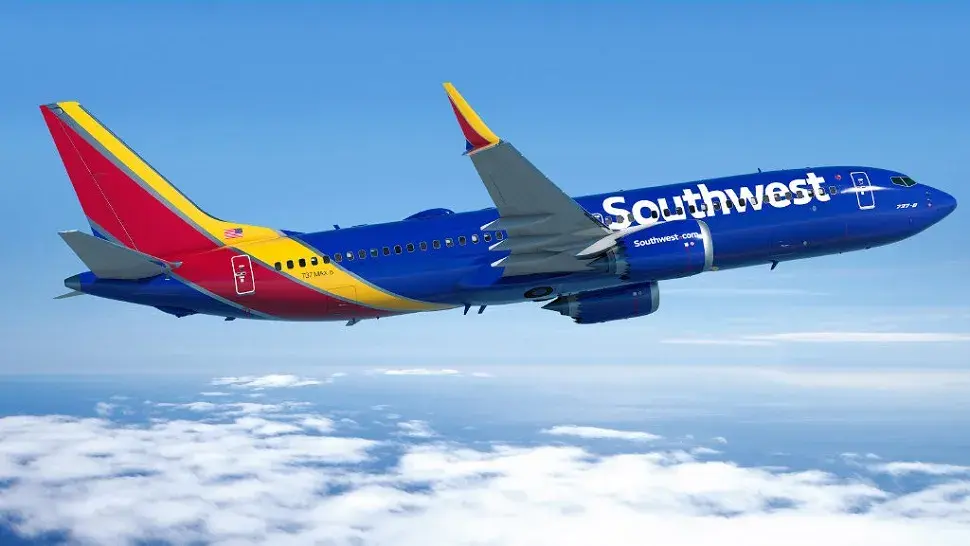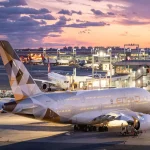Key Takeaways
- Spirit and Frontier consistently offer the lowest base fares at $29-89 for domestic routes, but total costs often match budget carriers after fees.
- Southwest provides the best overall value with free checked bags, no change fees, and transparent pricing that often beats ultra-low-cost carriers.
- International budget airlines vary by region – Norwegian and PLAY dominate transatlantic, AirAsia leads in Asia and Ryanair rules Europe.
- Total trip cost matters more than base fare – bag fees, seat selection, and change penalties can add $50-200+ to advertised prices.
Finding the cheapest airline requires looking beyond advertised base fares to calculate total trip costs including baggage fees, seat selection charges, and service restrictions.
Ultra-low-cost carriers advertise rock-bottom prices but generate revenue through extensive add-on fees, while traditional budget airlines include more services in base fares. Here’s your complete guide to identifying genuinely affordable air travel.
Want to learn about maximizing value on United flights? Join our Talk Travel United Airlines Forums where you will find the booking strategies, upgrade tips and cost optimization techniques across all fare classes.
Understanding Airline Pricing Models
Airlines operate under different business models that fundamentally affect pricing structures and total travel costs. Understanding these models helps identify which carriers offer genuine value versus deceptive low fares.
Ultra-low-cost carriers like Spirit, Frontier, and Allegiant strip all amenities from base fares, charging separately for carry-on bags, seat selection, drinks, and even printing boarding passes. This unbundled approach creates advertised fares as low as $29-49 but generates substantial revenue through ancillary fees.
The model mirrors United’s Basic Economy approach, where the lowest fare comes with significant restrictions that often make the total cost comparable to standard economy fares.
Low-cost carriers like Southwest and JetBlue include more services in base fares while maintaining competitive pricing. Southwest famously includes two free checked bags and no change fees, while JetBlue provides free carry-on bags and complimentary snacks.
Traditional legacy carriers including United, American, and Delta offer tiered fare structures with basic economy competing against ultra-low-cost carriers while higher fare classes include traditional amenities. Understanding United’s economy class structure reveals how legacy carriers balance competitive pricing with service quality across different fare tiers.
Domestic Ultra-Low-Cost Leaders
Spirit Airlines and Frontier Airlines dominate the domestic ultra-low-cost segment with the industry’s lowest advertised base fares.
Spirit Airlines operates an aggressive unbundling strategy with base fares frequently advertised at $29-59 for domestic routes. The airline charges $35-65 for carry-on bags, $30-50 for checked bags, and $1-50 for seat selection depending on location. Drinks and snacks require payment, with water costing $3 and sodas $4.
A typical Spirit flight total cost breakdown reveals the pricing reality. A $39 base fare plus $45 carry-on bag, $25 seat selection, and $10 for drinks and snacks totals $119. This often matches or exceeds traditional carriers during sales while providing significantly reduced service levels.
Frontier Airlines follows a similar model with “Discount Den” membership providing access to lowest fares.
Base fares start around $29-49, with carry-on bags costing $30-60, checked bags $30-50, and seat selection $6-50. The airline’s pricing structure closely mirrors Spirit’s unbundled approach.
| Carrier | Base Fare Range | Carry-On Fee | Checked Bag | Seat Selection | Typical Total |
| Spirit | $29-89 | $35-65 | $30-50 | $1-50 | $95-254 |
| Frontier | $29-79 | $30-60 | $30-50 | $6-50 | $95-239 |
| Allegiant | $39-99 | $30-75 | $30-75 | $5-80 | $104-329 |
Allegiant Air serves smaller markets with less frequent service, often operating just 2-3 flights weekly on specific routes. Base fares range from $39-99, with similar fee structures to Spirit and Frontier but higher charges for some services.
Want to discuss how budget carriers compare to United’s economy offerings? Join our Talk Travel United Airlines Forums where members share real-world cost comparisons and booking strategies across different carriers.
Southwest: The Value Leader
Southwest Airlines consistently delivers the best overall value in domestic air travel through transparent pricing and included amenities that competitors charge for separately.
The airline’s “Bags Fly Free” policy includes two free checked bags per passenger, a benefit worth $60-70 on other carriers. Southwest also includes free carry-on bags, no change fees, and flexible rebooking policies that provide genuine value beyond base fares. This contrasts sharply with United’s carry-on restrictions on Basic Economy, where passengers pay $35-60 for bags that Southwest includes free.
Southwest’s base fares typically range from $59-199 for domestic routes, appearing higher than ultra-low-cost carriers but often costing less when calculating total trip expenses. A Southwest ticket at $129 with two free checked bags costs less than a Spirit ticket at $39 plus $45 carry-on and $30 checked bag fees totaling $114.
The airline’s point-to-point route network serves major markets with frequent departures, providing schedule flexibility that budget carriers cannot match. Same-day standby is free for all passengers, allowing earlier or later flight changes without penalties.
Southwest’s Rapid Rewards program provides exceptional value with points that don’t expire and redemptions without blackout dates. Award availability typically exceeds legacy carriers, making points more useful for actual travel.
International Budget Carrier Landscape
International budget airlines vary dramatically by region, with different carriers dominating specific geographic markets through specialized route networks.
Transatlantic Budget Options
Norwegian Air operated the lowest transatlantic fares before restructuring, with base fares from $99-199 for routes between the U.S. and Europe. The airline’s financial difficulties led to significant route reductions, though some service continues on select routes.
PLAY Airlines emerged as Iceland’s budget carrier offering connections through Reykjavik with base fares from $129-299 for transatlantic routes. The airline charges for all bags, seat selection, and meals, following the ultra-low-cost model.
Icelandair provides competitive transatlantic pricing with free stopovers in Iceland, allowing two destinations for one fare. Base fares range from $299-599 depending on season and route, with carry-on bags included but checked bags costing $59-100. The service levels exceed what you’d find on United’s international economy routes, though pricing remains competitive.
European Budget Dominance
Ryanair operates Europe’s largest low-cost network with base fares frequently advertised at €9.99-29.99 for intra-European routes. The airline’s aggressive fee structure charges for priority boarding (€6-20), checked bags (€25-60), and even printing boarding passes at airports (€55).
EasyJet provides slightly higher base fares starting around €29-79 but includes more reasonable fee structures and better customer service reputation. The airline serves major European cities with frequent departures and competitive total pricing.
Wizz Air dominates Eastern European markets with ultra-low base fares from €9.99-49.99 and extensive fee structures similar to Ryanair. The airline’s route network focuses on underserved markets connecting Western and Eastern Europe.
Asian Budget Airlines
AirAsia operates Southeast Asia’s largest low-cost network with base fares from $19-89 for regional routes. The airline’s “Now Everyone Can Fly” slogan reflects aggressive pricing that democratized air travel across the region.
Scoot, Singapore Airlines’ budget subsidiary, offers longer routes including Australia and Japan with base fares from $99-299. The airline provides better service levels than pure ultra-low-cost carriers while maintaining competitive pricing.
IndiGo dominates India’s domestic market with the country’s largest route network and base fares from $29-79 for most domestic routes. The airline’s operational efficiency and scale enable competitive pricing with reasonable service levels.
Legacy Carrier Basic Economy
Traditional airlines introduced basic economy fares to compete with ultra-low-cost carriers while maintaining premium fare classes for travelers seeking enhanced services.
United, American, and Delta’s basic economy fares restrict carry-on bags, prohibit advance seat selection, and eliminate change flexibility. Base fares typically range from $59-149 for domestic routes, positioning between ultra-low-cost carriers and regular economy.
The total cost often matches regular economy after adding necessary fees, making basic economy attractive only for travelers who can accept all restrictions without requiring additional services. Many travelers wonder if United Economy is the same as Basic Economy, and the answer reveals significant differences in included amenities and total costs that affect which option provides better value.
Ready to explore strategies for getting free carry-on bags on United? Our Talk Travel United Airlines Forums community shares tips on credit card benefits and elite status advantages that eliminate baggage fees.
Regional and Niche Budget Carriers
Smaller budget airlines serve specific markets with competitive pricing that often beats major carriers on select routes.
Avelo Airlines launched in 2021 serving underutilized airports near major cities with base fares from $39-99. The airline’s smaller aircraft and secondary airport strategy enables lower operating costs passed to consumers through reduced fares.
Breeze Airways focuses on underserved point-to-point routes connecting smaller cities that legacy carriers abandoned. Base fares range from $49-129 with a “Seriously Nice” service approach that includes more amenities than pure ultra-low-cost carriers.
Sun Country Airlines operates a hybrid model with scheduled service and charter flights, offering competitive pricing from $59-149 on routes connecting Minneapolis to leisure destinations.
Calculating True Total Costs
Determining the cheapest airline requires calculating total trip costs including all fees and restrictions rather than comparing base fares alone.
A comprehensive cost comparison for a typical domestic round trip reveals the true pricing picture:
Spirit Airlines Total:
- Base fare: $78
- Carry-on bag (both ways): $90
- Seat selection (both ways): $50
- Drinks and snacks: $20
- Total: $238
Southwest Airlines Total:
- Base fare: $198
- Carry-on bag: Included
- Two checked bags: Included
- Seat selection: Included
- Drinks and snacks: Included
- Total: $198
The analysis reveals Southwest’s $198 total costs $40 less than Spirit’s $238 despite Spirit’s lower base fare, while providing superior service and flexibility.
Route-Specific Pricing Patterns
The cheapest airline varies significantly by route, with different carriers dominating specific markets through hub locations and competitive dynamics.
Florida routes see intense competition between Spirit, Frontier, Southwest, and legacy carriers, creating frequent fare wars that benefit consumers. Base fares on routes like New York to Fort Lauderdale often drop to $39-59 during sales.
Western U.S. routes benefit from Southwest’s extensive presence and Alaska Airlines’ competitive pricing, keeping fares reasonable even during peak periods. Routes like Los Angeles to Seattle frequently offer $79-129 fares.
Transcon routes between major coastal cities see all carrier types competing, with basic economy fares from $99-199 and full-service options from $199-399 depending on season and booking timing.
Booking Strategy for Lowest Fares
Finding the cheapest flights requires strategic booking approaches that go beyond simple price comparison. Book domestic flights 6-8 weeks in advance for optimal pricing, as fares typically increase closer to departure. International flights benefit from 3-6 month advance booking, particularly for summer travel and holidays.
Use fare comparison tools that calculate total costs including fees rather than just base fares. Google Flights, Kayak, and Momondo provide comprehensive comparisons that reveal true pricing across carriers.
Consider nearby airports when searching, as secondary airports often feature budget carriers with significantly lower total costs. Flying into Oakland instead of San Francisco or Midway instead of O’Hare can save $50-150.
The Bottom Line
The cheapest airline depends entirely on your specific route, travel dates, baggage needs, and service expectations. Spirit and Frontier offer lowest base fares but often cost more than Southwest after fees for travelers needing standard services.
Southwest consistently provides the best overall value for domestic travel through transparent pricing and included amenities that competitors charge for separately. International travel requires region-specific research, as different budget carriers dominate each geographic market.
Calculate total trip costs including all likely fees before booking, as advertised base fares rarely reflect actual travel expenses. The genuinely cheapest option often isn’t the carrier with the lowest advertised fare.
Related Guides:
- United Airlines Personal Item Size Guide
- Is United Premium Economy Worth It?
- United Airlines Boarding Groups Explained
- United Premium Plus vs Polaris Business Class
- United Economy Plus vs Economy
Frequently Asked Questions
Which airline has the cheapest flights in the United States?
Spirit Airlines and Frontier Airlines advertise the lowest base fares at $29-89 for domestic routes, but total costs often exceed Southwest after adding carry-on fees ($35-65), checked bags ($30-50), and seat selection ($1-50). Southwest provides better overall value with base fares from $59-199 that include two free checked bags, free carry-on, no change fees, and complimentary snacks. Calculate total costs including fees to identify the genuinely cheapest option for your specific needs.
Is Southwest really cheaper than Spirit and Frontier?
Southwest often costs less than Spirit and Frontier when calculating total trip expenses. A Spirit ticket at $39 plus $45 carry-on and $30 checked bag totals $114, while Southwest at $129 includes bags and seat selection. Southwest’s two free checked bags (worth $60-70 on other carriers), no change fees, and flexible rebooking provide additional value. Spirit and Frontier only beat Southwest for travelers with no bags who accept all restrictions.
What is the cheapest airline to fly to Europe?
PLAY Airlines offers the lowest transatlantic base fares from $129-299 through Reykjavik connections, though fees add significantly. Norwegian Air previously dominated with $99-199 fares before restructuring. Icelandair provides competitive pricing from $299-599 with free Iceland stopovers and included carry-on bags. Within Europe, Ryanair offers the lowest fares at €9.99-29.99 but charges heavily for bags and services, often making total costs comparable to EasyJet’s higher base fares with better service.
Do ultra-low-cost carriers actually save money?
Ultra-low-cost carriers like Spirit, Frontier, and Allegiant save money only for travelers who can travel with just a personal item, accept random seat assignments, and need no flexibility. Adding a carry-on bag ($35-65), checked bag ($30-50), and seat selection ($1-50) often makes total costs equal or exceed traditional carriers during sales. These airlines work best for short trips with minimal luggage, but most travelers find better value with carriers including more services in base fares.
Which budget airline has the best service and reliability?
Southwest Airlines provides the best combination of low fares and reliable service among budget carriers, with industry-leading on-time performance and customer satisfaction ratings. JetBlue offers superior service with free carry-on bags, complimentary snacks, and more legroom than competitors, though base fares run slightly higher. Spirit and Frontier have the worst reliability and customer service ratings, with frequent delays, cancellations, and additional fees that frustrate passengers seeking the lowest advertised fares.





